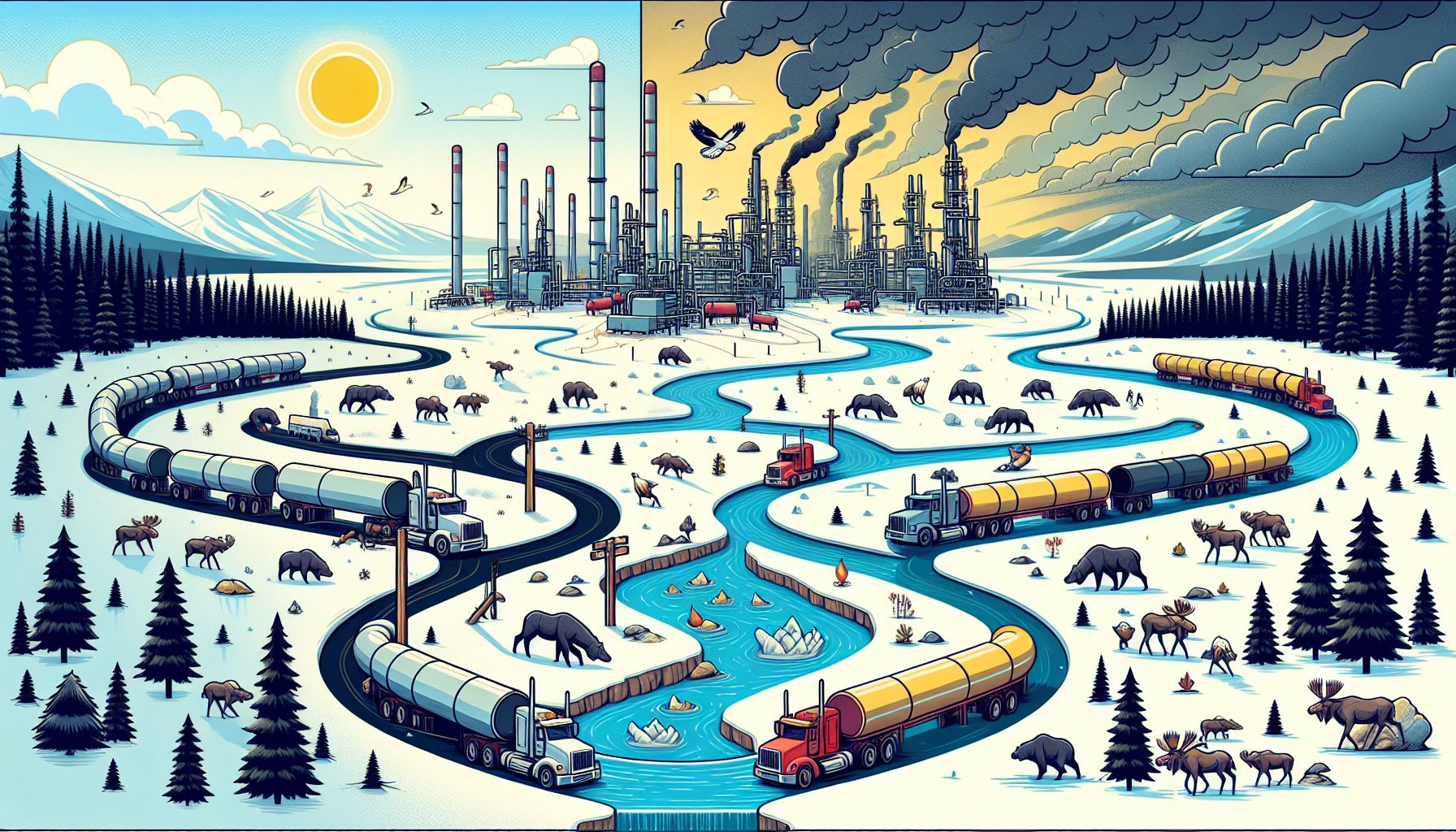For decades, the oil and gas industry has played a significant role in shaping Canada’s economy. From the vast oil sands of Alberta to the offshore drilling operations in the Atlantic, this industry has made a profound impact on both the nation’s wealth and its environment. However, behind the scenes of this industrial giant lies a complex and perplexing journey that is worth delving into.
The Great Canadian Resource
Considered the backbone of Canada’s natural resource sector, the oil and gas industry has always been a beacon for economic growth. With abundant reserves of oil and natural gas scattered across its vast lands, Canada has become one of the world’s top oil producers. Its diverse landscapes, ranging from vast prairies to Arctic tundra, offer an array of resources waiting to be tapped.
Alberta: The Heart of the Industry
When talking about the Canadian oil and gas industry, it’s impossible not to mention Alberta. This province is home to the Athabasca oil sands, often referred to as the “tar sands” due to their heavy bitumen content. These oil sands contain an estimated 1.7 trillion barrels of oil, making Alberta the third-largest crude oil reserve in the world.
However, extracting oil from the tar sands is not a straightforward process. It involves mining and processing vast quantities of sand and clay, consuming significant amounts of water and energy. Additionally, the environmental implications, including greenhouse gas emissions and habitat destruction, have raised concerns both domestically and internationally.
Striking a Balance between Industry and Environment
Canada, being a resource-rich nation, faces the challenge of finding a balance between economic prosperity and environmental stewardship. As global climate concerns intensify, the pressure on the oil and gas industry to reduce its carbon footprint increases.
In recent years, the Canadian government has implemented measures to address environmental concerns associated with the industry. Policies have been put in place to reduce emissions, improve energy efficiency, and promote the development of cleaner technologies. While progress has been made, the journey towards a truly sustainable oil and gas sector remains an ongoing challenge.
The Impact on Indigenous Communities
Another critical aspect of the Canadian oil and gas industry is its relationship with Indigenous communities. Many oil and gas operations are located on traditional Indigenous lands, sparking tensions between economic development and preserving cultural heritage.
To address these concerns, the Canadian government has initiated efforts to foster collaboration and consultation with Indigenous groups. Agreements have been made to ensure the participation and benefit-sharing of Indigenous communities in resource development projects. However, finding a mutual understanding that respects both economic opportunities and Indigenous rights is an ongoing process.
The Emergence of Renewable Energy
As the world transitions towards a renewable energy future, Canada finds itself at a crossroads. The development of wind, solar, and hydroelectric power presents new economic opportunities while reducing dependency on fossil fuels. The Canadian oil and gas industry must adapt and embrace these changes to remain competitive on the global stage.
Investments in renewable energy are already on the rise in Canada, with wind and solar projects gaining momentum. Many oil and gas companies are diversifying their portfolios, exploring greener alternatives to traditional fossil fuel extraction methods.
Conclusion
The Canadian oil and gas industry is undoubtedly a powerhouse that has significantly shaped Canada’s economy. However, it is also an industry shrouded in complexity and controversy. Striving for a sustainable future, balancing environmental concerns, respecting Indigenous rights, and embracing renewable energy are all part of the enigmatic journey this industry must navigate.
By understanding and addressing the challenges faced by the Canadian oil and gas sector, we can strive for progress that benefits both our economy and the environment. As the world evolves, this industry must adapt, innovate, and, most importantly, learn from its past to shape a brighter tomorrow.
[Quilbot Edited Version]

